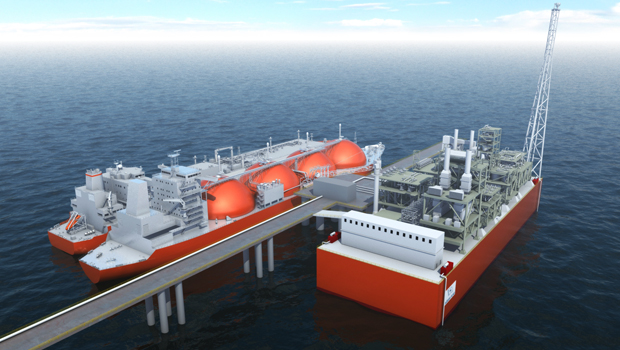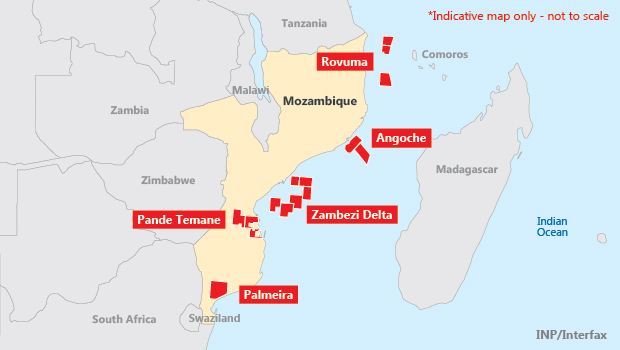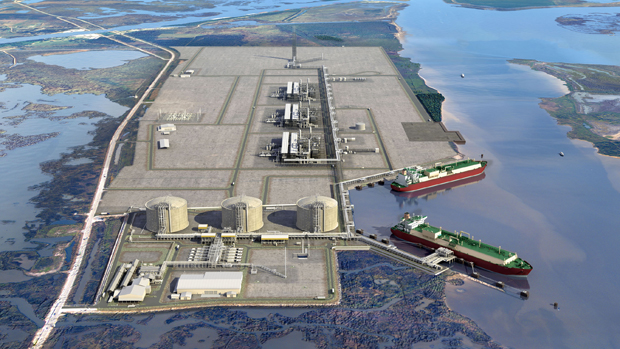FLNG developers race to solve technology riddle
 An artist’s impression of an FLNG installation. Many designs feature a ship-type hull. (Höegh)
An artist’s impression of an FLNG installation. Many designs feature a ship-type hull. (Höegh)
High costs and lengthy lead times mean LNG developers are increasingly looking at FLNG as an alternative to traditional onshore plants. However, with no FLNG projects yet onstream, investors are still wary of the technology – a situation further complicated by the use of differing liquefaction techniques.
The first two FLNG projects scheduled to start up – Petronas’s PFLNG 1 and Shell’s Prelude – will use different methods to cool the gas. In Malaysia, Petronas has opted for nitrogen expansion technology, while Shell will employ the double-mixed refrigerant (DMR) technique it has already successfully used onshore in Russia on the Sakhalin 2 project.
Advocates of nitrogen expansion point to the robust safety framework afforded by using the relatively stable gas, as opposed to more flammable refrigerant options such as propane and ethane.
Nitrogen expansion is mostly considered for mid-scale projects with a capacity of around 1-2 mtpa. However, as the size of the plant increases, nitrogen becomes less economical, bringing other refrigerants into the equation.
The most commonly used liquefaction process – known as mixed refrigerant – uses propane as the pre-cooling agent, while Shell’s DMR technology uses a mixture of components – mainly propane and ethane. Shell claims its technique requires less room on board and reduces the amount of highly flammable propane in the vessel’s inventory. The DMR technique supports 1-8 mtpa of LNG per train, making it better suited for larger projects than nitrogen expansion.
As well as selecting a preferred method of liquefaction, potential FLNG operators must choose from a number of other technical options – which, depending on how they are used, will be crucial to a project’s success.
Rounded up
Although all the FLNG projects that have progressed beyond an FID have so far opted for an oblong, ship-type vessel, Norway-based offshore technology specialist Sevan Marine has developed a cylindrical platform concept adapted from its circular FPSO design.
Sevan claims the cylindrical hull provides better stability in high seas – which could prove crucial when offloading – while requiring a smaller crew, thus saving on operational costs. The design holds 180,000-210,000 cubic metres of LNG.
However, critics of the cylindrical platform point to the added expense of towing the unit wherever it is required, while its shape means there would be relatively little distance between liquefaction machinery, living quarters and so on, thereby raising additional safety concerns.
Meanwhile, sticking with a traditional ship-type hull adds the possibility of vessel conversion. Dutch FPSO-manufacturing specialist SBM Offshore has proposed converting two LNG carriers and then joining them together to form an FLNG unit with a capacity of 1-2 mtpa.
SBM has said vessel conversion is likely to be substantially cheaper than new-builds as it allows operators to reuse the ship’s storage capacity and its marine systems.
Although a novelty in the world of floating liquefaction, the conversion technique has proved successful for FSRUs – the FSRU Toscana, anchored 22 km off the coast of Italy, was built by converting a former LNG tanker into a terminal with a regasification capacity of 3.75 billion cubic metres per year.
Another uncertainty surrounding FLNG concerns offloading technology. The first option to emerge – a ‘side by side’ solution, where LNG carriers pull up and moor alongside the floating unit – has been highlighted as potentially problematic in high seas. The two vessels would move independently of one another, making it difficult to transfer LNG and creating a risk of collision.
An alternative is the so-called ‘tandem solution’, where the LNG carrier is aligned with the FLNG unit at a safe distance, and the cargo is transferred either by hose or by another vessel. This method hinges on the development of floating hose technology, which would make the process relatively straightforward.
“The hoses are also very close to an understood type of marine operation, so if that technology was here right now, I think a lot of people would choose it,” said one FLNG engineer who wished to remain anonymous.
Whichever options prove popular, prospective FLNG developers will be paying keen attention to PFLNG later this year, when it is scheduled to come onstream.
The successful startup of that project and Prelude would doubtless go a long way to convince the majors that FLNG represents the cheapest and most efficient way of monetising previously stranded assets.









